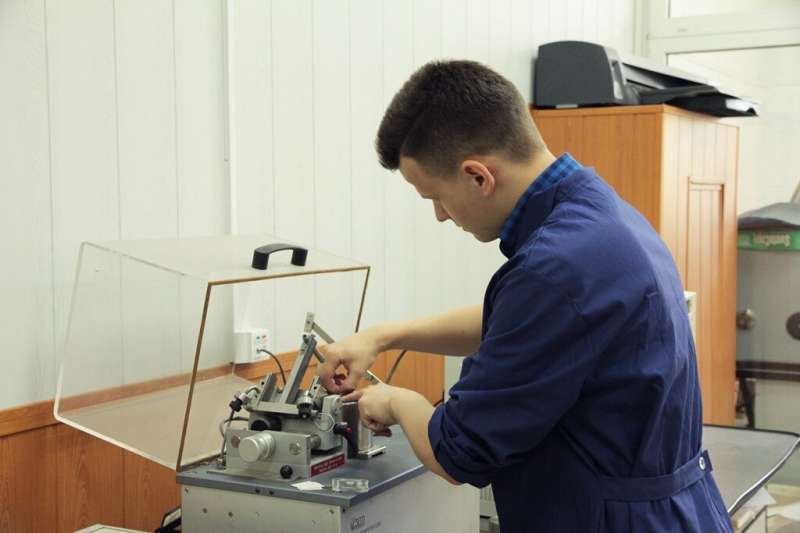Scientists demonstrate how to improve steel properties

Scientists from Tomsk Polytechnic University have updated the alloying process, i.e. improving the properties of metal with impurities, which not only enhances the wear resistance of materials but also provides new qualities required by hi-tech manufacturing, science, and energy.
The study results were published in the journal Surface and Coatings Technology and presented at the conference on Surface Modification of Materials by Ion Beams (SMMIB) 2019 that recently took place in Tomsk.
By now, traditional alloying methods are reported to have exhausted their technological potential. Therefore, metals are increasingly exposed to beams of charged particles, plasma flows, and laser radiation so as to obtain advanced materials. Ion implantation (ion doping) is one of those methods that can change elemental composition, microstructure, and morphology of surface layers that determine such properties as wear resistance, corrosion resistance, and others.
Tomsk scientists developed a new method of ion implantation that dramatically expands the applications of the method in industry. According to Alexander Ryabchikov, the head of the Laboratory for Highly Intensive Ion Implantation, they have been able to experimentally improve the wear resistance of stainless steel by more than a hundred times.
In addition, this technology makes it possible to manufacture details and products with needed specific surface properties. For example, a barrier layer is formed by ion doping of zirconium with titanium, thus preventing oxygen penetration. This can be used to increase the service life and safety of operation of nuclear fuel cells.
Currently, the industrial use of ion doping is constrained by the small thickness of the formed ion-doped layers. The issue to be addressed through the increased kinetic energy of the ion flux implies the use of large accelerators, which is not cost-effective.
"We proposed to increase the ion penetration depth into the material by enhancing the radiation-induced diffusion with high-density ion beams that are two to three orders of magnitude superior to those used in traditional ion implantation," said Alexander Ryabchikov.
The results obtained in the laboratory confirm the possibility of creating a doped surface layer with a depth of several hundred micrometers, while other methods of ion doping enable a depth of several tens and hundreds of nanometers.
The authors emphasize that the development of highly intensive implantation of ions with low energy could revolutionize the technology of improving material properties. Further research in this field will enable us to reduce the cost of the technology application and improve the quality of products.
More information: A.I. Ryabchikov et al, Surface modification of Al by high-intensity low-energy Ti-ion implantation: Microstructure, mechanical and tribological properties, Surface and Coatings Technology (2019). DOI: 10.1016/j.surfcoat.2019.05.020
Provided by Tomsk Polytechnic University




















